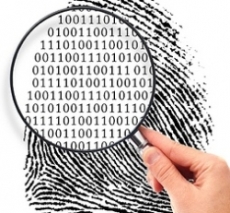
The increased popularity of BYOD (Bring Your Own Device) in workplaces has created potential for large security hole. Companies of all sizes are vulnerable to threats imposed by employees using their own computes or mobile devices to do business and access sensitive information. Business owners cannot prevent this trend from taking hold in their companies, however they do need to ensure their computer systems and information is secured from falling in the hands of criminals or those who intend to do harm to your business. Computer forensic is one way to track the employee behavior and catch the ones who intend to do harm. Here is how computer forensic can help secure your business.
How to Catch Dirty Employees in the Act
Companies have been using advanced software and hardware for decades to catch dishonest employees. Today, the threat is even greater. Businesses have the burden of proof when making a claim against an employee.
Specifically, employers have to prove that:
- The employee took the information without permission.
- The information they took caused some kind of provable harm to the company.
- The make, model, and serial number of any electronics used belong to the company or that there was an electronic device used in the theft.
- When the storage device was first connected.
- The last time the storage device was used.
Using special software programs, a company can record computer usage statistics, and even screen capture of an employee using company computers. This information can then be logged in a central database for future investigations.
Using Mobile Forensics
Mobile forensics is similar to traditional computer forensics, but involves tracking of mobile devices. Like laptop and desktop tracking, mobile forensics is concerned with the recording and extracting of information from the device.
However, because mobile devices use special software, and can perform special tasks like making phone calls and sending and receiving text messages, they need to be analyzed a little differently than laptops and desktops.
Products, like the iPhone and Blackberry, or Android devices, can contain information that may provide insight on what an employee is doing at work, and what he or she was doing in the preceding weeks or months leading up to the crime.
Sometimes, evidence on the mobile device will point directly to the commission of the crime.
For example, text messages extracted from an iPhone or Blackberry could be used to prove communication with a competitor or collusion with another employee. Phone call logs and records could be used to piece together metadata about call history and possible phone calls and conversations that took place that are linked to the commission of the crime.
Mobile forensic tools can be used to log and track all voicemails ever left on the phone, all emails ever sent or received, all user data that was generated on the phone, including emails and text messages, and the GPS can be used to log movement of the employee at any given time in the past.
Preserving Evidence
Evidence can be stored on highly secure third party databases or in-house and used when necessary. Of course, with advanced software capable of recovering even deleted information from phones and computers, privacy becomes of paramount importance.
That’s why many forensics companies have special training in privacy and security, and most businesses that engage in computer forensics should outsource the job to a specialist, both for liability reasons and for personal security and privacy of other innocent employees on the network.
Jared Stern, a certified digital forensic examiner, is a federal and state court-admitted cell phone and computer forensics subject matter expert. He is also the President of Prudential Associates, an investigative agency that uses a powerfully-equipped forensics lab, http://www.usainvestigators.com, which exceeds the capability and capacity of more than 90 percent of all the law enforcement labs operating in the United States. His articles are available on many criminal science career and industry websites.






